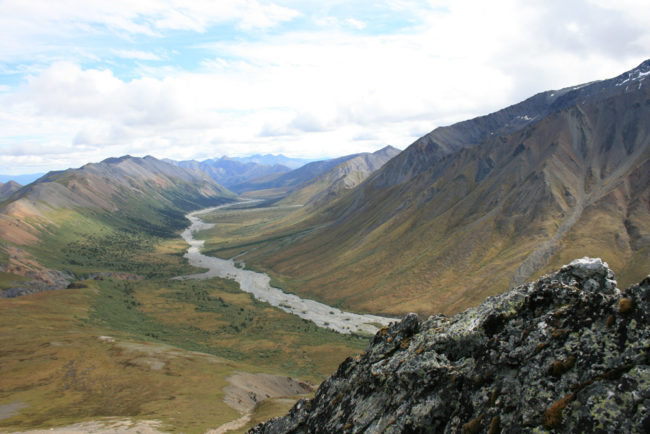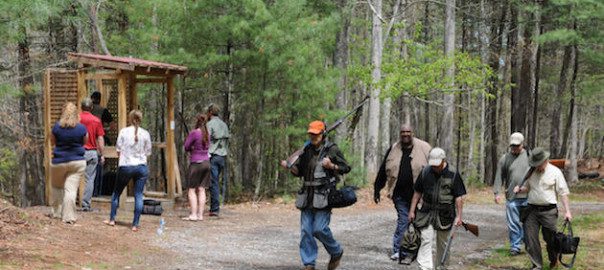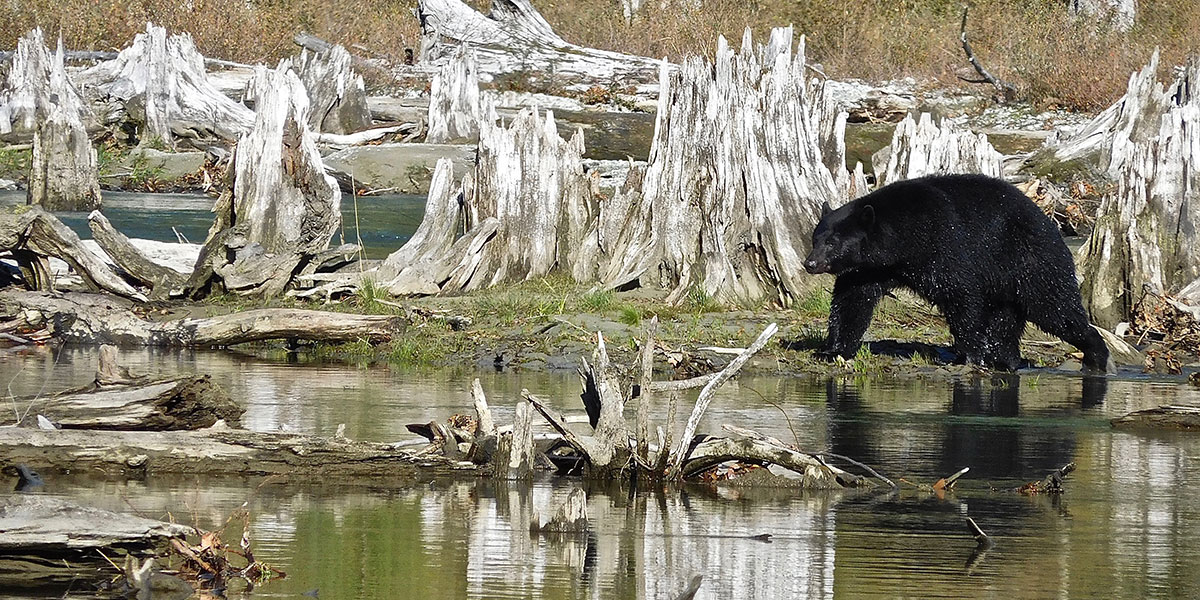There is an old saying about grizzly bears that even where there are a lot of them, there aren’t many of them.
While this is generally the case, there is a valley I have seen, right where Alaska and the Yukon meet, just north of the White River, where big, truculent mountain grizzlies are more common than any place I have ever been.
We found this grizzly mecca by accident. My wife, Leslie, and I had been searching for a remote place to hunt Dall sheep and had contacted several flying services out of Tok and McCarthy, Alaska. Some of the better-known landing strips had already been booked, and others were off limits due to deals worked out between the flight services and local outfitters.
There was one, however, that was as remote as we could get while still being in Alaska. The pilot said he had flown a lone hunter into the strip two years before, and that she killed a black bear and had seen some Dall rams at the head of the drainage. It seemed like a long shot, but worth a try.
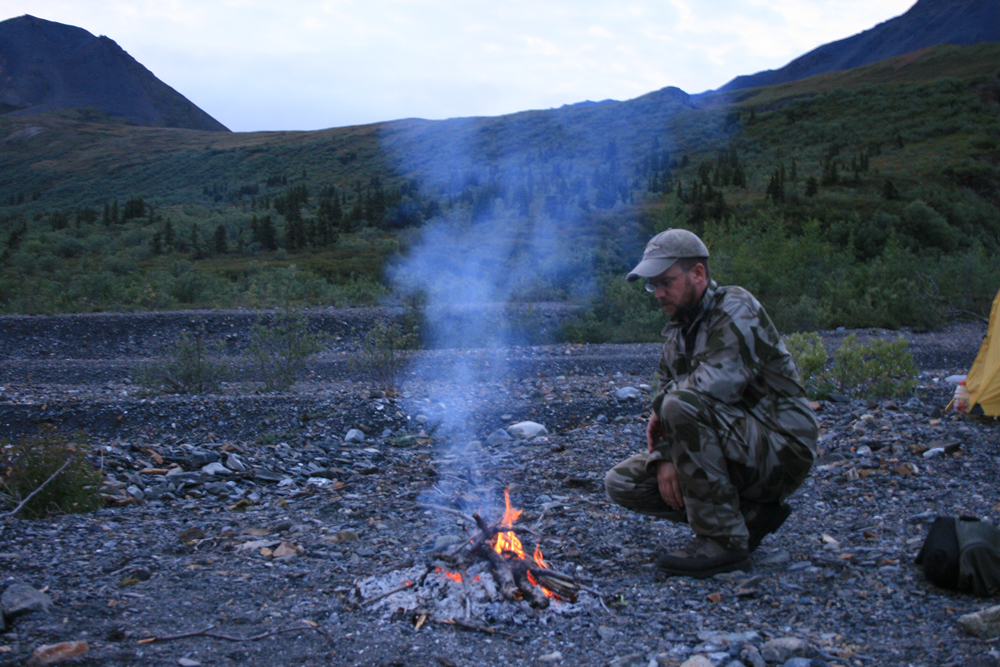
Moments after this photo was taken, a grizzly appeared across the river along the edge of the willow thicket.
We arrived at the strip two days before the start of the season. As the pilot left, we were struck by that sense of utter aloneness that always comes as you watch the plane disappear over the horizon. Then we heard the tinkling sound of rolling rocks on the mountainside above us. A big, blonde sow grizzly and her two brown cubs were running nearly straight up an avalanche chute. She must have been in the valley as the plane landed and decided to take her little family elsewhere.
We made a cache near the landing strip, where we would leave extra food and supplies, then shouldered our packs and headed for the high country at the head of the long, narrow river valley. We made camp at a spot where three small glacial creeks come together and quickly set out to do some scouting.
The opening day of sheep season dawned gray and overcast. This was a bad omen, as August in that part of the northern Wrangell Mountains can be wet in mid-August. The mountain peaks were shrouded in clouds, but we decided to explore the glacier-filled canyons above us in hope of finding rams while they were still undisturbed.
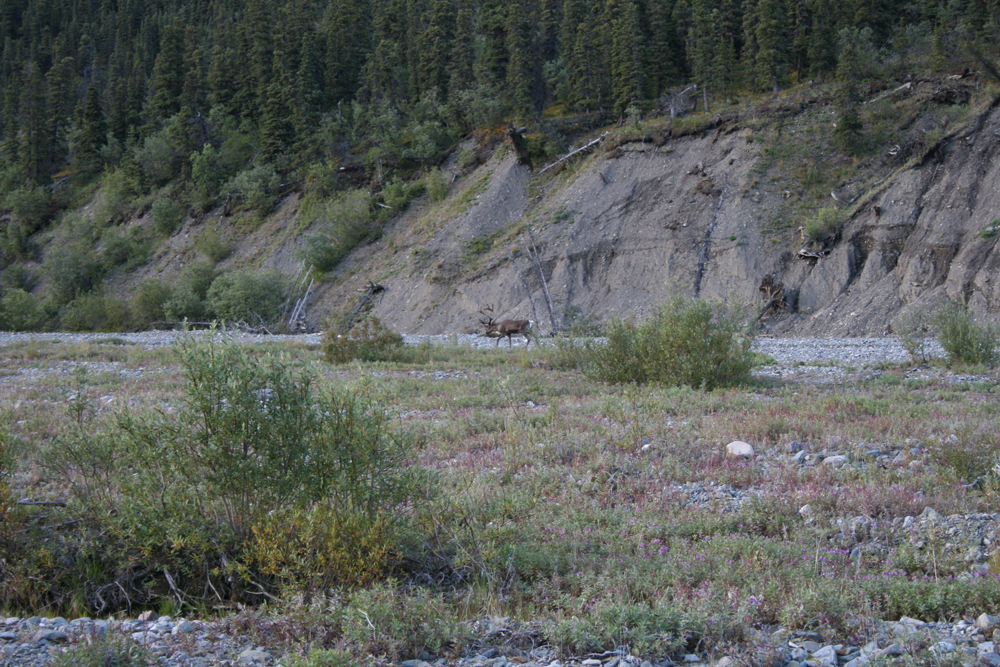
There were plenty of bears and several mountain caribou in the valley, but the author struggled to find a shootable sheep.
We had just made it to a small, rocky pass where we could see into the next drainage when the rain started. It was a complete deluge by Alaska standards, and we had no choice but to head for camp. We were nearly soaked by the time we got back to the tent, and only that evening, during a brief lull in the storm, were we able to start a small fire and dry our clothes and gear.
We were sitting by the fire in the long, sub-arctic summer twilight when a small boar grizzly emerged from the willows across the river bars below camp. He took a few steps toward the river, then stopped and stood on his back feet, undoubtedly puzzled by the campfire. After a few seconds he turned back the way he came and disappeared into the brush.
And so it went for the next week. We covered all of the canyons and basins that surrounded our little piece of wilderness. It was stunning to watch how fast the season was changing at that high altitude. The willows and mountains were mostly green when we arrived, but after ten days of cold rain and frosty nights the willows had begun to turn yellow and scarlet streaks of arctic birch appeared on the surrounding slopes. We saw a small herd of mountain caribou that had crossed over the Yukon border and found four additional grizzlies. We were there to hunt sheep, though, so we resisted the temptation of taking a bear, knowing that it would require a lot of time to properly flesh and care for the hide.
Then, on our second-to-last day, we caught a break. We awoke to clear skies that allowed us to really glass the mountains around camp. After a few minutes I located a small group of five white dots in a little hanging basin. The spotting scope showed them to be bedded rams, one of which appeared to have a full curl, which made it legal in that part of Alaska.
I immediately grabbed the rifle and headed for the back side of the ridge that the rams were on, hoping to approach them from above. After an hour of climbing, I arrived just below the rim, stopped to catch my breath, and peeked over the top. All I found was a decidedly empty mountainside.
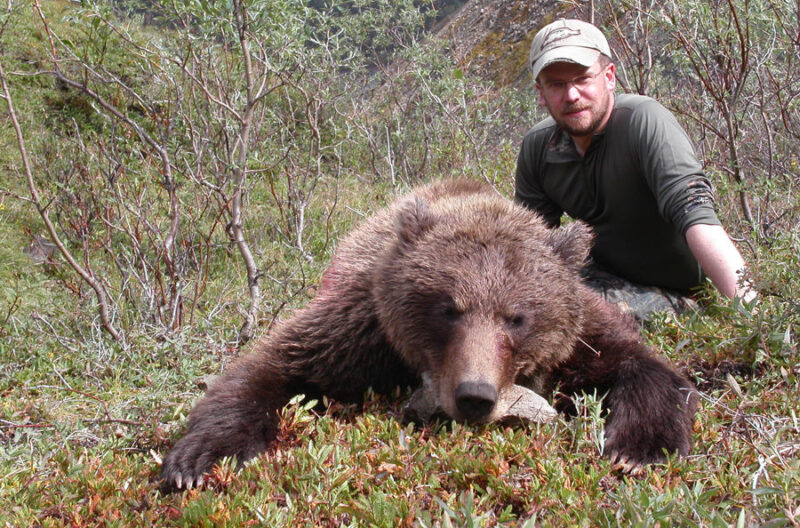
The author with his grizzly. The bear scared off the sheep he was pursuing, so the hunter aimed his rifle at the bear instead.
I quickly scanned the surrounding slopes but found no trace of the rams. I checked over the far ridge to see if they had fed over the top, but to no avail. For some reason, they had decided to abandon the mountain altogether.
Then I heard the all-too-familiar sound of rolling rocks at the bottom of the basin. I quickly located the source of the sound — a grizzly busily hunting pikas in the rockslides below me. It all started to make sense. The grizzly must have wandered into the basin, scaring the sheep away before I arrived.
It was now very late in the hunt, so I decided to take the grizzly. I ducked back behind the ridge and approached the bear from above. At 80 yards, I wrapped into a tight sling and sat for a moment, watching the wind rippling through the bear’s long, thick coat before taking up the last bit of slack in the trigger. The first shot took the bear behind the right front leg; it swapped ends, and I put another bullet into the left shoulder. At that point the bear tumbled down the slope, coming to rest in a small patch of willow.
Two days later, just after takeoff, I spotted the blonde sow and her two cubs on a little, rocky knoll not far from camp. The valley was hers again.
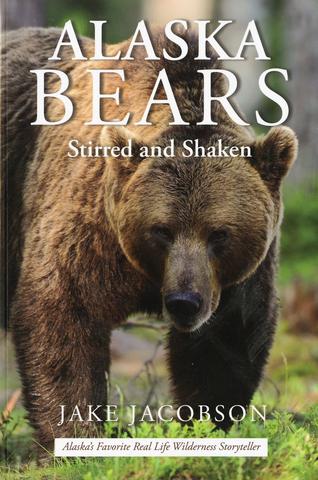 ALASKA BEARS: Stirred and Shaken is a collection of 24 stories describing Jake’s personal experience hunting and guiding for all the species of bears in Alaska. Bear biology, hunting techniques, cabin depredations and avoidance thereof, and other aspects of bear pursuits are detailed. These are true stories except for the names of some of the hunting guests from Jake’s fifty years of living and hunting in Alaska. Buy Now
ALASKA BEARS: Stirred and Shaken is a collection of 24 stories describing Jake’s personal experience hunting and guiding for all the species of bears in Alaska. Bear biology, hunting techniques, cabin depredations and avoidance thereof, and other aspects of bear pursuits are detailed. These are true stories except for the names of some of the hunting guests from Jake’s fifty years of living and hunting in Alaska. Buy Now
